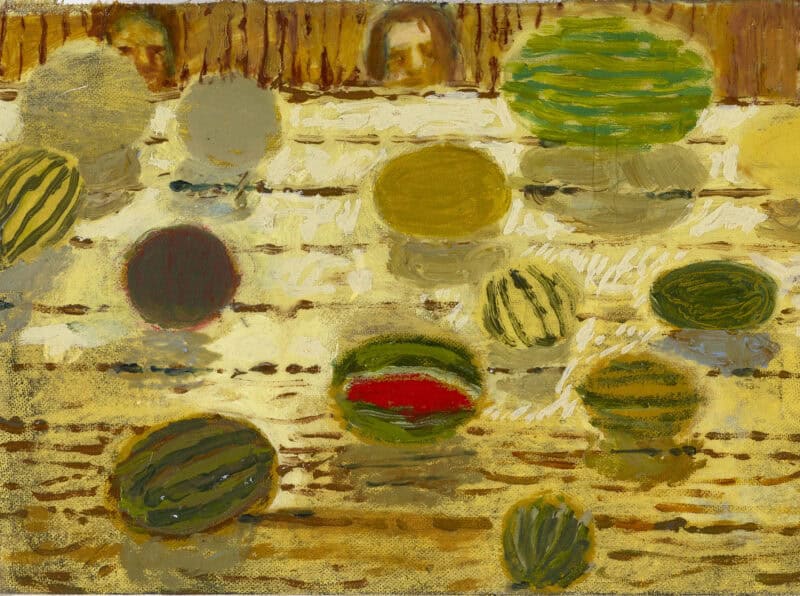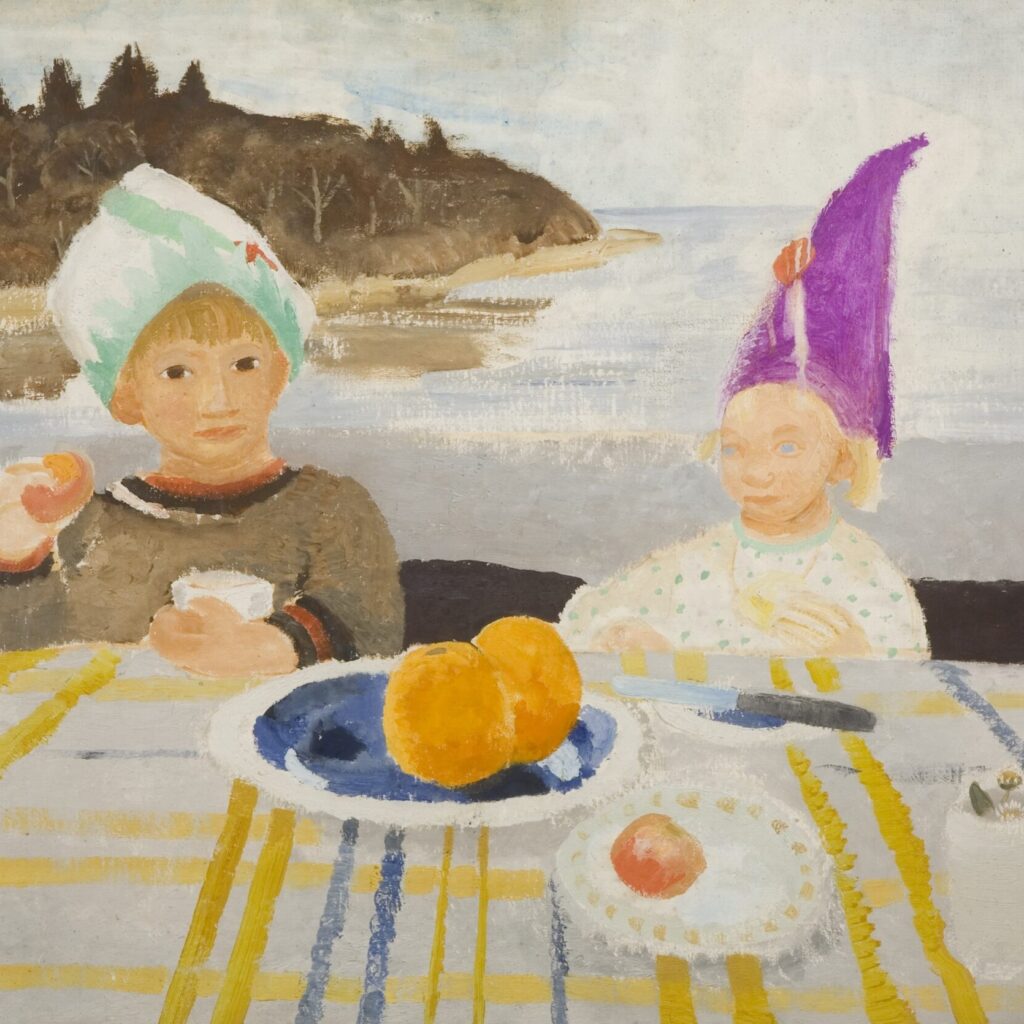3 October 2025 – 11 January 2026
Dreams of the everyday, our new exhibition brings together the paintings of Winifred Nicholson (1893–1981) and Andrew Cranston (b. 1969, Hawick, UK). Dreams of the everyday is curated by the designer and collector Jonathan Anderson, in collaboration with Andrew Cranston and the gallerist Richard Ingleby.
The exhibition explores the connections and contrasts in paintings by Nicholson and Cranston, many of which share a delight in ordinary, often domestic, realities – drawing on daily-life, memory and imagination, and incorporating figures, interiors and glimpses of nature. Both artists’ practices are at once rooted in the real world, while going beyond conventionality and the commonplace to evoke a sense of non-physical, sometimes mystical, and occasionally visionary, realities.

The two painters, though distanced by time and place, are connected by their commitment to a kind of painting that values intimacy over showmanship. The earliest and most recent works in the exhibition are separated by a century – and whilst Nicholson often travelled from her base at Bankshead in Cumbria to paint in Cornwall, Paris, Greece, and on the west coast of Scotland, Cranston, originally from Hawick, has resolutely remained living and working in Glasgow.
Despite such disparity in circumstances, and their distinctly different voices, their works sit well in each other’s company, and in juxtaposing their paintings, the exhibition seeks to reveal something new about both. Highlighted in the exhibition are several of the single and group portraits that Nicholson painted between the wars, which speak lyrically of the life she led bringing up a young family in her adopted home of Cumbria, in the north of England. Her images of home life, especially of her children, provide a fascinating point of comparison with Cranston’s paintings in which childhood, memory and association are also often powerful ingredients. At the same time, with their flattened space and tipped-up tabletops, Nicholson’s paintings from the 1920s and 1930s offer an art-historical bridge between Cranston’s works and the early days of European modernism.
Jonathan Anderson notes: “This exhibition came about when I was speaking to Richard Ingleby, and we have worked together on this. I had just seen this amazing picture by Winifred Nicholson of The Warwick Family, and you know I have always adored Andrew Cranston’s work. There was something about the knife and the plate in the foreground and I thought: what a beautiful synergy it could be to see them together in a show. There’s something about the freedom and efficiency of the brush stroke within two different types of language, and I think for me it was this idea of looking at the still life, interiors, the domestic scene – I thought, there’s two of my favourite artists in one room.”
The exhibition celebrates tenderness, and painting’s ability to give intimacy a physical form. Take Nicholson’s 1934 painting Bathtime, depicting her children Jake and Kate in the bath. Andrew Cranston has described it as exemplifying a ‘quality of opacity’ that he particularly responds to in her work: “It explores a tension that arises from making something solid that isn’t solid. To translate into paint things like water, air, light.” Bathtime (c.1934) is here partnered with Cranston’s painting Dreams of the everyday (2018), which depicts his wife Lorna in the bath, whilst heavily pregnant.
Andrew Cranston comments: “As a painter I have, as Bonnard put it, ‘a morbid sensitivity to surface’, and this aspect of Nicholson’s work is one that I keep returning to. In her early paintings there is this shifting tonal fog within her paint that keeps the eye ever so slightly active, as opposed to a total, inert flatness that stops the eye dead. There’s a certain hesitancy in her touch, doubt even, that is so gentle. A warm human wobble. I see it in the paint of Chardin and Corot and Bonnard, and Vuillard and Morandi, and Gwen John and Christopher Wood too. It’s a company of quiet painters that don’t always make major statements but nevertheless are perhaps more powerful because of that. It is this that holds me.”
Image credits: Top - Winifred Nicholson, Kate and Jake, Isle of Wight, 1932 © Trustees of Winifred Nicholson, Courtesy Bristol Museums Below - Andrew Cranston, Melons and heads, 2017. Image courtesy the artist and Ingleby Gallery

